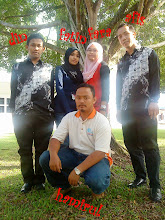Area and volume.
1. If an anisotropic solid has coefficients of linear expansion αx, αy, and αz for three mutually perpendicular direction in the solid, what is the coefficient of volume expansion for the solid?
Solution :
Consider a cube, with edge parallel to X, Y, Z, of dimension L˳ at T = 0. After a change in temperature ∆T = (T-0), the dismension change to
Lx = L˳(1+αxT) Ly = L˳ (1+αyT) Lz = L˳ (1+ αz T)
And the volume of of the parallelopipied is
V = V˳ (1+ αxT) (1+αyT) (1+ αz T)
2. An open aluminum 300-mL container is full of glycerin at 20ͦ C. what volume of glycerin overflows when the container is heated to 110 ͦ C? use the expansion coefficients given in the table 17-1 and 17-2.
Solution :
The volume of glycerin that overflows is equal to the difference in the volume expansion of glycerin ∆Vg and the volume expansion of aluminum ∆Va .
∆Vg = βg V ∆t
∆Va = 3αV ∆t
∆Vg - ∆Va = ( βg – 3a)V ∆t
α equels 2.55 x 10-5 ͦ C -1 and βg equal 5.3 x 10 -4 ͦ C -1.
[(5.3 x 10 -4 )-3( 2.55 x 10-5 )](300)(110 ͦ - 20 ͦ ) = 12.2mL
Thus, 12.2mL of glycerin overflows.
3. A glass vessel is filled with exactly 1L of turpertine at 20 ͦC. what volume of the luquidwiil overflow with the temperature is raised to 86 ͦC?
Solution :
As the temperature rises, both the capacity of the glass vessel and volume of the turpentine increase : ∆VT-∆Vg = (βT- βG)V∆t. Nothing that βg = 3αg.
∆VT-∆Vg = (9.4 x 10 - 4 ͦ C -1) – (0.25 x 10 -4 ͦ C -1 )(1L)(66 ͦC)=66Ml
4. The density of gold is 19.30g/cm³ at 20 ͦC. compute the density of gold at 90 ͦC.
d1/d2 = v²/v²(1+3α∆T)
= 1-3α∆T
d1= d2(1-3α∆T)
= (19.30)[1-3(14.2 x 10^-6 ͦC^-1)(70 ͦC)]
d1 = 19.24 g/cm³
5. the density of mercury at 0 ͦC is 13600kg/m³.calculate the density of mercury at 50 ͦC.
∆v/v0 = β∆T
= (1.82 x 10^-4 ͦC^-1)(50 ͦC) = 0.0091
ρ 1 = (13600kg/m³)1/1+0.0091
= 13 477 kg/cm³
Subscribe to:
Post Comments (Atom)

No comments:
Post a Comment